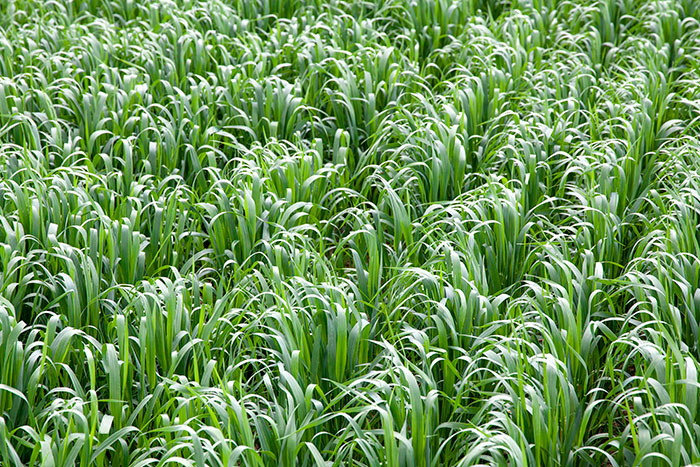Consider these spring-planted forage options |
| By Kassidy Buse |
|
|
|
The challenging growing conditions of 2018 have left many dairy farms short on forage supplies. So, going into the 2019 growing season, what are some options to bolster forage inventories? Mark Sulc, Ohio State University (OSU) Extension forage specialist, and Bill Weiss, OSU Extension dairy specialist, discuss the options available to farmers and some considerations to keep in mind in an article published in the Buckeye Dairy News newsletter. Options The authors emphasize that corn silage is the number one choice for an annual forage in terms of overall yield and nutritive value. The following options are acceptable short-season forages that can be used to make ends meet, especially if alfalfa winterkill is an issue.
“Plant high-quality seed of a named variety to avoid unpleasant surprises,” the authors recommend. For small grain mixes, reduce the seeding rate of each component to 70 percent of the full rate. Forage peas can be added to the mix to raise crude protein levels. Small grains can be planted 1.5 inches deep as early as soil conditions allow, while Italian ryegrass should be planted between April 1 and May 1 no more than 0.5 inches deep. “A burn down application of glyphosate is a cost-effective weed control practice prior to planting,” the authors comment. Additional nitrogen may be needed at 30 to 50 pounds per acre at planting, but manure application can reduce some or all of this needed nitrogen. Italian ryegrass will need about 50 pounds per acre after the first or second harvest. Harvest timing matters “Maturity affects composition more than species does,” the authors state. The nutritional value of small grain forages declines rapidly with maturity. When harvested at the preboot stage, small grain forages will have around 20 percent crude protein (CP), which varies with the amount of additional nitrogen applied. It will usually test about 40 percent neutral detergent fiber (NDF), 30 percent acid detergent fiber (ADF), and have an in vitro digestibility of around 80 percent. Dry matter (DM) yields will range between 1.5 and 2.4 tons per acre. “Small grain forages harvested in the boot stage have energy concentrations similar to corn silage but with greater concentrations of protein,” the authors explain. At the milk stage, plants have an average of 12 percent CP, 48 percent NDF, 35 percent ADF, and an in vitro digestibility of 62 percent; they have about 10 percent less energy than corn silage. This nutritional content is similar to alfalfa. Dry matter yields generally range from 3 to 4 tons per acre. According to the authors, Italian ryegrass planted in central Ohio produced 2.5 to 4.6 tons of DM per acre in the first year and 1 to 4.5 tons of DM per acre in the second. An NDF content of around 50 percent and CP concentrations between 12 and 16 percent can be expected. If Italian ryegrass is fed as the sole source of forage, milk production will be less than what is seen with corn silage. But according to the authors, if it comprises 15 to 20 percent of the diet’s DM, milk production, composition, and feed efficiency are good. The authors do warn that ryegrass is typically high in potassium, so make sure to supplement magnesium. Above all, the authors recommend testing all harvested forages to provide accurate nutritional values for balancing rations. Tough to dry If mechanically harvesting, chopping and ensiling or making baleage are the best options; getting the material to wilt enough for dry bales is a challenge. Grazing is an effective and affordable alternative to utilizing these forages. Small grains that are young and lush can cause bloat, so feeding a high-quality grass hay, silage, or bloat preventative can help. To reduce potential problems with off-flavored milk, remove lactating dairy cattle from small grain forages at least two hours prior to milking.  Kassidy Buse Kassidy Buse was the 2018 Hay & Forage Grower summer editorial intern. She is from Bridgewater, S.D., and graduated from Iowa State University with a degree in animal science. Buse is currently attending the University of Nebraska-Lincoln pursuing a master’s degree in ruminant nutrition. |

